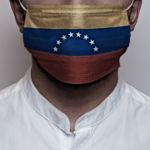Great writers appeal to readers across time, place, culture, or catastrophe. They unveil truths that circumstances may hide. During the early lockdowns of the COVID-19 pandemic, many people cracked open books that had been collecting dust. There was a pervasive yearning to make sense of our newfound circumstances. What happens to a society when millions of people abruptly succumb to a virus? How do we live well while also preparing for death? How do we navigate state-imposed loneliness? What sources of hope might counter our despair?
When his school shuttered its doors in March 2020, the University of Houston historian Robert Zaretsky also turned to what he knew: novels, histories, and essays about bygone plagues. He read again old books for new insight—works by Thucydides, Marcus Aurelius, Michel de Montaigne, Daniel Defoe, Albert Camus, and Mary Shelley. He also began volunteering in a local nursing home, delivering meal trays and hand-feeding impaired residents. Zaretsky’s book, Victories Never Last: Reading and Caregiving in a Time of Plague (University of Chicago Press, 2022), thus seeks to apply the wisdom of these six writers to his own experiences of pandemic, both in and out of the nursing home. Zaretsky’s work is more reflective than instructive. But to the extent that rereading great writers helped him understand the experience of COVID-19, he hopes that those who read his reflections will be similarly aided.
Ancient Plagues
Zaretsky begins with Thucydides’ History of the Peloponnesian War and its description of the calamitous 430–429 BCE plague of Athens. The infection—now thought to have been typhus—disrupted Athenian life significantly; those infected often died in less than a week. Appeals for divine aid went unheeded, and perhaps as many as a third of Athens’s population perished. Thucydides himself was stricken with the ailment, yet somehow survived, and he credibly describes the chaos that ensued in Athens.
Start your day with Public Discourse
Sign up and get our daily essays sent straight to your inbox.Lawlessness abounded; convention was cast aside. Some retreated in isolation while others cast off restraint, devolving into what Zaretsky calls a “Hobbesian state of nature.” The economic, human, and psychological toll on city life was crippling. Throughout the chapter, he weaves brief references to his volunteer work in nursing homes—tying to themes of plague-induced discord, transcendence, and statistics—but these are mere flecks against the backdrop of Zaretsky’s treatment of Thucydides’ account. He concludes the chapter by noting that “while Thucydides does not leave much room for hope, he leaves even less room for despair,” for although Athens fell, its virtues of civic-mindedness, intelligence, and integrity prevail. I wished Zaretsky would pick up this reference to virtue at the start of the next chapter, but he doesn’t.
What follows instead is an accounting of how the great physician Galen became physician to emperor Marcus Aurelius. This is a noteworthy story, but it fails to continue the previous chapter’s nod toward the virtues. Where Zaretsky does resume the virtue theme, although implicitly, is in his characterization of Marcus Aurelius as a philosopher, “one who held empire not just over much of the world, but who also held empire over his inner world,” one who did not so much “seek to be informed, but instead to be formed.” Zaretsky is of course referring to Marcus’s Meditations. This text is a sort of private journal in which he reasons candidly with himself and considers the sort of person he wishes to become. Marcus wrote his Meditations as he led his soldiers into war and warred against the 165–180 Antonine Plague, now thought to have been smallpox.
Zaretsky notes that although the Meditations was written during war and plague, Marcus scarcely mentions either. Marcus simply says that both falsehoods and plague are toxic and must be avoided, and of the two, lies are worse. False perceptions are problematic for a Stoic such as Marcus, Zaretsky reminds the reader, because they blind us to right action. We can’t prepare for death, for example, if we don’t own up to our finitude. Zaretsky’s inclusion of the Meditations in this volume is less about how to make sense of pandemic specifically and more about how the Stoics thought about human mortality generally. All will die, including the residents of the nursing home where Zaretsky volunteered. It is rational, indeed pragmatic, to prepare for death.
False perceptions are problematic for a Stoic such as Marcus, Zaretsky reminds the reader, because they blind us to right action. We can’t prepare for death, for example, if we don’t own up to our finitude.
Black Death
Death is also the concern of Zaretsky’s next two chapters, which focus on the bubonic plague in Bordeaux in 1585, and in London in 1665–1666. Between 1300 and 1800, Western Europe had become distressingly familiar with the bubonic plague (or black death). Wave after wave swept through and sometimes halted population growth altogether.
Michel de Montaigne, who would become Bordeaux’s mayor when plague struck, had begun writing his Essays during retirement in 1571. Montaigne knew death intimately—he lost a dear friend, most of his children, and nearly his own life. In 1585, half of Bordeaux’s population succumbed to plague, with a disproportionate impact on the poor. Montaigne survived the plague, and the course of his essays turned toward a celebration of everyday life, of quotidian being. Montaigne concludes his Essays with a petition for a strong mind in old age and the solace of music. Similarly, Zaretsky concludes the chapter with a story from the nursing home about a resident whose mind was weak yet who found comfort in yodeling. Perhaps Zaretsky is suggesting that even if we don’t age as we’d wish, solace is yet attainable.
For Daniel Defoe, on the other hand, the 1665–1666 plague of London didn’t inspire philosophical reflection, but rather nurtured his propensity for dissent. Defoe’s A Journal of the Plague Year, a first-person account of the plague years, questions the accuracy of reported mortality statistics. It also explores the extent to which these statistics are manipulated to encourage hope, enrich some people, or foment fear in others. Dashboard statistics, of course, served the same function during the COVID-19 pandemic. Zaretsky recounts how both nursing home staff and residents remained glued to the numbers. Defoe describes how similar unease took root in London: streets emptied, quarantine policies become more stringent, and Londoners wrestled with whether to flee the city or stay. Then, as now, no such choice existed for essential workers; their very livelihoods courted risk. Some Londoners banded together to help one another, but others—including physicians with fake cures—only exhibited self-interest. And once the plague showed signs of abating, Londoners rushed back en masse to reopen shops and resume old political and religious grievances. In Defoe’s account, plague didn’t inspire a sort of reflective gratitude for life’s gifts, but instead was quickly forgotten—perhaps another parallel to the COVID-19 pandemic.
Defoe describes how similar unease took root in London: streets emptied, quarantine policies become more stringent, and Londoners wrestled with whether to flee the city or stay. Then, as now, no such choice existed for essential workers; their very livelihoods courted risk.
Novels and Disease
In his last chapter, Zaretsky pivots to a work of fiction that concerns death: Albert Camus’s La Peste or The Plague. The work is fiction, to be sure. But the story is about a community’s disdain for plague-induced quarantine in Oran, Algeria—disdain that closely mirrors Camus’s own contempt at being constrained by economic necessity to live in Oran in an apartment owned by his mother-in-law. And just months after Camus and his wife escaped Oran for a hamlet in France, a new plague arrived: Nazi Germans in November 1942. His book thus becomes a metaphor for ideological invasion told through an accounting of the invasion of bacteria-infested rats. Through a plague narrative, Camus says he expresses “the sense of suffocation from which we all suffered, and the atmosphere of menace and exile that we all experienced.” Ideological or bacterial threats may take our lives, but, Zaretsky concludes, they can’t take the knowledge and memories of those we love.
Zaretsky reinforces this notion in an epilogue framed around Mary Shelley’s The Last Man, a novel that reflects her “own desolate situation.” Shelley’s father was emotionally distant, and she had lost two children, her husband, and her mother. In The Last Man, she tells the story of plague killing every human being until only one remains. With nothing and no one left to live for, life becomes meaningless. He despairs. But Zaretsky refuses to leave his reader there. “[W]hile the sky remains indifferent and human relationships are doomed to end, we are not doomed to meaningless lives,” Zaretsky writes. Love saves us from despair, and Zaretsky proves his case with one last story from the nursing home. When COVID-19’s acuity waned, and the care home opened its doors, one elderly lady played the piano to the enchantment of a room full of her fellow residents—a gift saturated with meaning.
Mass illness has always devastated societies and disrupted convention. It has always affected the poor more than the rich. Pandemic suffocates, isolates, and exiles. It prompts a reckoning with human finitude and capacities to confront fear.
For all its fascinating reflections, Victories Never Last has been advertised as a guide to making peace with suffering—which is at best an overstatement and at worst untrue. Zaretsky offers the reader no account of theodicy, and provides no systematic handbook for making sense of global pandemic. Nor does he offer a compelling explanation for why a world riddled with disease and death can be seen as anything other than absurd. And his somewhat random insertion of anecdotes from his several-month-stint as a nursing home volunteer is underdeveloped and only loosely correlative. The reader never comes to know any of the residents in a memorable way.
What Zaretsky does do, however, and does quite well, is show how great books and thinkers of bygone eras continue to assert their relevance. His curated texts underscore that plague is as old as recorded history. Mass illness has always devastated societies and disrupted convention. It has always affected the poor more than the rich. Pandemic suffocates, isolates, and exiles. It prompts a reckoning with human finitude and capacities to confront fear. Yet even if all human beings but one succumb to disease, life still brims with meaning. Why this is true, Zaretsky does not say. But he refuses to cede to the contrary. Life matters. Relationships matter. Love matters. And if we hold fast to these, we will not be without hope.














